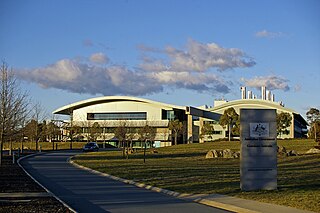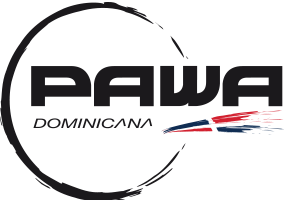Related Research Articles

The European Geostationary Navigation Overlay Service (EGNOS) is a satellite-based augmentation system (SBAS) developed by the European Space Agency and EUROCONTROL on behalf of the European Commission. Currently, it supplements the GPS by reporting on the reliability and accuracy of their positioning data and sending out corrections. The system will supplement Galileo in a future version.

The Wide Area Augmentation System (WAAS) is an air navigation aid developed by the Federal Aviation Administration to augment the Global Positioning System (GPS), with the goal of improving its accuracy, integrity, and availability. Essentially, WAAS is intended to enable aircraft to rely on GPS for all phases of flight, including precision approaches to any airport within its coverage area. It may be further enhanced with the Local Area Augmentation System (LAAS) also known by the preferred ICAO term Ground-Based Augmentation System (GBAS) in critical areas.
Alliance Airlines Pty Limited is an Australian airline based in Brisbane, Queensland, with operational bases in Adelaide, Cairns, Perth, Townsville, Darwin, and Rockhampton. Alliance Airlines owns and operates a fleet of Fokker and Embraer jet aircraft: Fokker 70, Fokker 100 and Embraer 190. Alliance runs fly-in fly-out (FIFO) air charter services for the Australian mining and resources industry, as well as private aircraft charters throughout Australia, New Zealand, the Pacific Islands and South East Asia. Alliance also provides aircraft component sales and leasing worldwide.

The Robinson R44 is a four-seat light helicopter produced by Robinson Helicopter Company since 1992. Based on the company's two-seat Robinson R22, the R44 features hydraulically assisted flight controls. It was first flown on 31 March 1990 and received FAA certification in December 1992, with the first delivery in February 1993.

A satellite navigation or satnav system is a system that uses satellites to provide autonomous geopositioning. A satellite navigation system with global coverage is termed global navigation satellite system (GNSS). As of 2023, four global systems are operational: the United States's Global Positioning System (GPS), Russia's Global Navigation Satellite System (GLONASS), China's BeiDou Navigation Satellite System (BDS), and the European Space Agency's Galileo.

Differential Global Positioning Systems (DGPSs) supplement and enhance the positional data available from global navigation satellite systems (GNSSs). A DGPS for GPS can increase accuracy by about a thousandfold, from approximately 15 metres (49 ft) to 1–3 centimetres.

Geoscience Australia is an agency of the Australian Government. It carries out geoscientific research. The agency is the government's technical adviser on all aspects of geoscience, and custodian of the geographic and geological data and knowledge of the nation.

GippsAero is an Australian aircraft manufacturer based at Latrobe Valley Airport in Morwell, Victoria. The company builds single-engined utility aircraft. These include the multi-role GA8 Airvan and the agricultural GA200 Fatman. In late 2020, brand owner Mahindra Aerospace announced plans to shut down GippsAero due to poor sales unless a buyer could be found. Its 2021 Board Report indicated that GippsAero Pty Ltd. had been converted into a Spares and Support Organization.

Airservices Australia is an Australian Government owned corporation, responsible for providing services to the aviation industry within the Australian Flight Information Region (FIR). Some of Air services responsibilities include air traffic control, airway navigation, and communication facilities, publishing aeronautical data, airport rescue, and fire-fighting services. Airservices Australia has international partnerships with ICAO, CANSO and IATA.

The Quasi-Zenith Satellite System (QZSS), also known as Michibiki (みちびき), is a four-satellite regional satellite navigation system and a satellite-based augmentation system developed by the Japanese government to enhance the United States-operated Global Positioning System (GPS) in the Asia-Oceania regions, with a focus on Japan. The goal of QZSS is to provide highly precise and stable positioning services in the Asia-Oceania region, compatible with GPS. Four-satellite QZSS services were available on a trial basis as of 12 January 2018, and officially started on 1 November 2018. A satellite navigation system independent of GPS is planned for 2023 with seven satellites. In May 2023 it was announced that the system would expand to eleven satellites.
The Future Air Navigation System (FANS) is an avionics system which provides direct data link communication between the pilot and the air traffic controller. The communications include air traffic control clearances, pilot requests and position reporting. In the FANS-B equipped Airbus A320 family aircraft, an Air Traffic Services Unit (ATSU) and a VHF Data Link radio (VDR3) in the avionics rack and two data link control and display units (DCDUs) in the cockpit enable the flight crew to read and answer the controller–pilot data link communications (CPDLC) messages received from the ground.

The Australian Transport Safety Bureau (ATSB) is Australia's national transport safety investigator. The ATSB is the federal government body responsible for investigating transport-related accidents and incidents within Australia. It covers air, sea and rail travel. The ATSB is an independent Commonwealth Government statutory agency, governed by a Commission and is separate from transport regulators, policy makers and service providers.
Multi-functional Satellite Augmentation System is a Japanese satellite based augmentation system (SBAS), i.e. a satellite navigation system which supports differential GPS (DGPS) to supplement the GPS system by reporting on the reliability and accuracy of those signals. MSAS is operated by Japan's Ministry of Land, Infrastructure and Transport and Civil Aviation Bureau (JCAB). Tests have been accomplished successfully, MSAS for aviation use was commissioned on 27 September 2007.
The GPS-aided GEO augmented navigation (GAGAN) is an implementation of a regional satellite-based augmentation system (SBAS) by the Government of India. It is a system to improve the accuracy of a GNSS receiver by providing reference signals. The Airports Authority of India (AAI)'s efforts towards implementation of operational SBAS can be viewed as the first step towards introduction of modern communication, navigation and surveillance / air traffic management system over the Indian airspace.
Augmentation of a global navigation satellite system (GNSS) is a method of improving the navigation system's attributes, such as precision, reliability, and availability, through the integration of external information into the calculation process. There are many such systems in place, and they are generally named or described based on how the GNSS sensor receives the external information. Some systems transmit additional information about sources of error, others provide direct measurements of how much the signal was off in the past, while a third group provides additional vehicle information to be integrated in the calculation process.

PAWA Dominicana was the international flag carrier of the Dominican Republic. It was created as a subsidiary airline for Pan American Airways. This airline had scheduled flights between Santo Domingo and other Caribbean and US destinations. It was based at Santo Domingo-Las Americas.

GMV, founded in 1984, is a Spanish private capital business group with an international presence and more than 3000 workers. In its early days, it focused on the space and defense sectors, being the contract for the European Space Operations Centre (ESOC) the beginning of its growth. Over the years it has diversified its operations and expanded into other fields becoming today's technology group, which comprises 11 areas of specialization: Space, Aeronautics, Defense and Security, Intelligent Transportation Systems (ITS), Automotive, Cybersecurity, Healthcare, and Digital Public Services, Industry, Financial sector, and Services.
OmniSTAR is a satellite-based augmentation system (SBAS) service provider. OmniSTAR correction signals are proprietary, and a subscription must be bought from the OmniSTAR corporation to receive a subscription authorization. OmniSTAR uses geostationary satellites in eight regions covering most of the landmass of each inhabited continent on Earth:
- MSV-E, MSV-C, MSV-W
- AMSAT
- AORWH
- AOREH
- EUSAT
- IORHN
- APSAT
- OCSAT

The Regional Aviation Association of Australia (RAAA) is a non-profit organisation representing the interests of regional aviation in Australia. RAAA has approximately 100 members and 2500 employees. They Provide air transportation in Australia for more than 2 million passengers and 23 million kilograms cargo per year.
GSAT-10 is an Indian communication satellite which was launched by Ariane-5ECA carrier rocket in September 2012. It has 12 KU Band, 12 C Band and 6 lower extended c band transponders, and included a navigation payload to augment GAGAN capacity. Following its launch and on-orbit testing, it was placed in Geosynchronous orbit at 83.0° East, from where it will provide communication services in India.
References
- ↑ "Trial of accurate positioning". Geoscience Australia. 2019-10-05. Retrieved 2021-04-19.
- ↑ "SBAS Test-Bed Demonstration Project" (PDF). Frontier SI. 2019. Retrieved 2020-04-25.